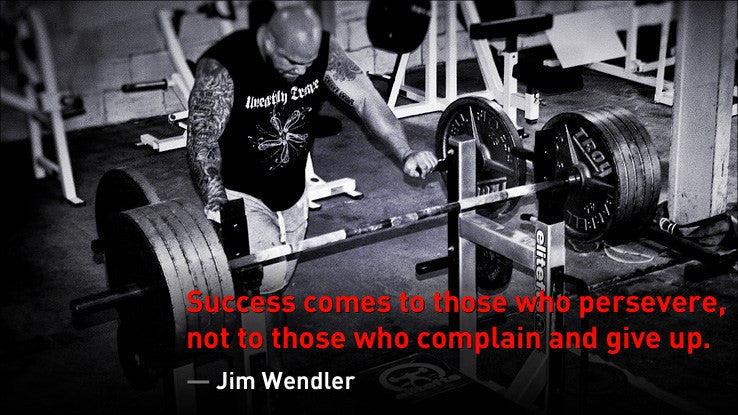Of the major lifts, the bench press and the press are always the last to mature. A lifter can enjoy five or more years of steady gains in the squat, power clean, and deadlift but still suffer numerous setbacks, plateaus, and frustration in the pressing game. This is the natural order of the lifting world, especially for those that aren't physically gifted in the bench press. I didn't press much for the first 10 years of training. Most of my training was dedicated to squatting, cleans, running, and jumping. Upper-body work was definitely low on the priority list. Like many people who are dedicated to athletics, performance on game day takes precedence over trying to impress others in the weight room.
While I did bench press, I didn't give it much thought. In hindsight, I probably should've, but I'm glad I put my effort where I believed it was needed. It did, however, take me seven years of training to go from 300 to a 400-pound bench press. That's a very long time – too long. But after I pressed 400, it only took me three months to get to 455. I credit this to simply taking a step back and making my upper body stronger with simple, basic methods. Those seven years taught me if you want to lift big, you have to be strong. And you have to be strong everywhere, which is something gimmicks fail to provide you. Like life, success comes to those who persevere, not those who complain and give up. Here are some tips I've learned along the way that may help you.
Like anything in training, the key is to learn from the best and once you have adequate experience, tweak things to fit your own technique and style. Don't try something once and disregard it or start tinkering right away, especially if you don't have adequate experience. Years ago I had the privilege of attending a seminar taught by Mike Miller of Nazareth Barbell and Bill Crawford of the Metal Militia. These guys are both great pressers and had a very unique and disciplined way of setting up for the bench press. And if you learn from either of them, you'll develop a deeper understanding of just what being "tight" is all about. It's beyond uncomfortable, but it works extremely well, even for raw pressers. Here's a modified version of what I was taught and still use today. Do this on every set, especially the warm-ups. This will help reinforce the set-up, allow you to get used to the position, and get you ready for your heavier sets.The Set-Up
- Begin with your head off the bench press.
- Tuck your feet underneath you.
- Grab the bar with an underhand grip (it's much easier to pull yourself up and under the bar with an underhand grip), lift your body off the bench, and push yourself towards your feet. Do not let your feet move when you do this.
- Make sure you push yourself towards your feet until your eyes are under the bar.
- This is an uncomfortable position; get used to it!
- Your lower and upper back should be arched hard and you should feel very solid and strong.
- Take the weight off STRONG. Make sure your hands are tight on the bar and you don't wimp the weight off the j-hooks.
- When the bar is over your chest, make sure you drive your heels down to the ground. Even if they don't touch the ground, the attempt to drive them down will stabilize your body and result in a very strong base.
However you choose to bench press, make sure every single rep, regardless of weight is done with perfection. This goes for the squat, deadlift, press and any other big barbell lift. I've never seen any strong, experienced lifter take any set lightly - they demand perfection from the bar to their max. Think back to the last time you bench pressed - did you have a perfect set-up on the very first rep with the empty bar? Did you treat it with the same importance as your last max attempt? The beginner still thinks there must be some kind of special secret or trick. A veteran lifter always makes sure the simple things are taken care of; those things aren't incredibly sexy but they always get results.




